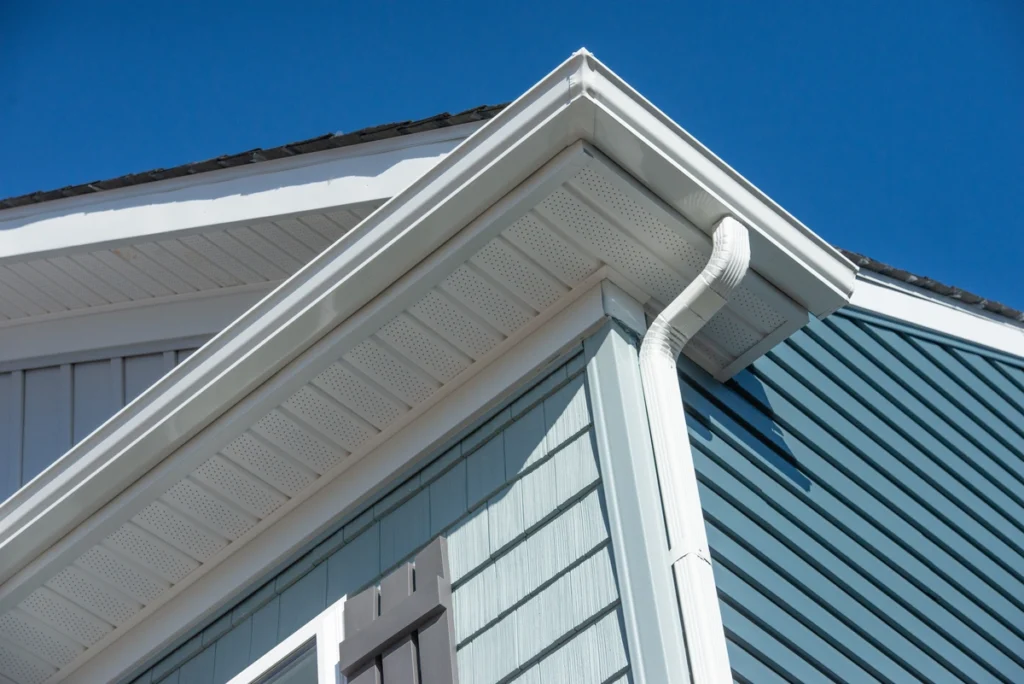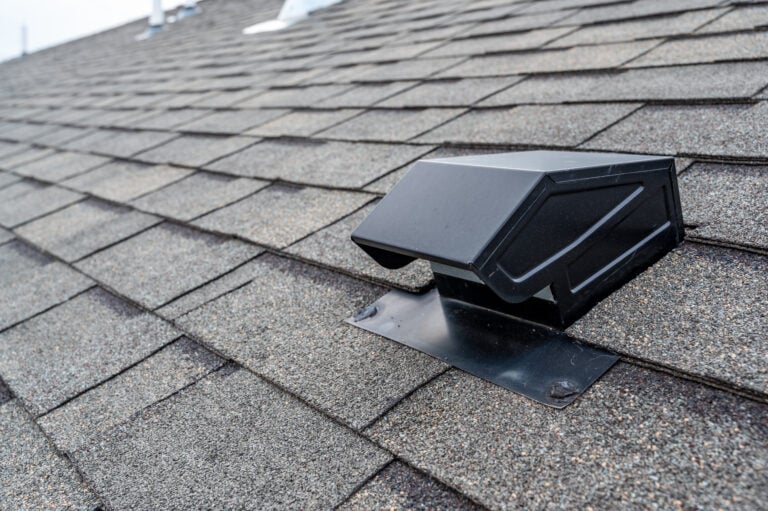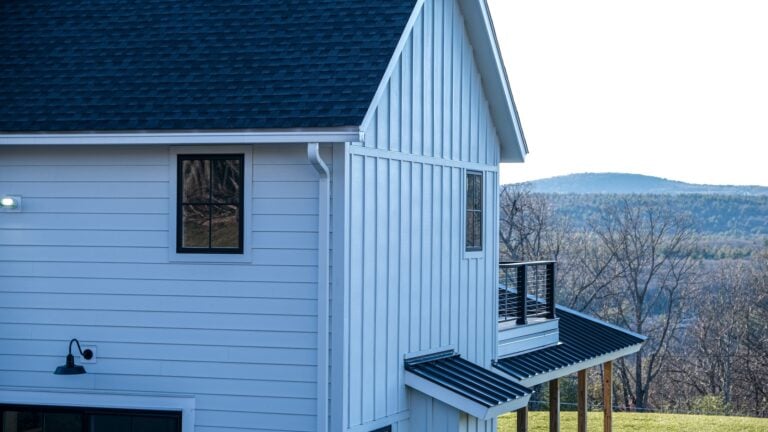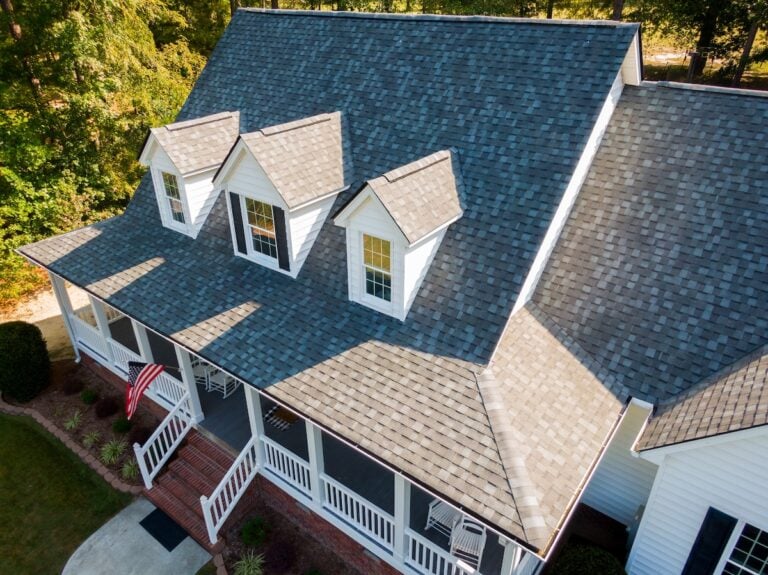When it comes to home architecture, eaves may not always be the first thing you think about, but they play an essential role in the structure and function of your house. Whether you’re planning a new home build, renovations, or just curious about your house’s design, understanding eaves is important for every homeowner. This blog will explore:
- What the eaves of a house are and their purpose
- The 6 benefits of eaves on a house
- Installation basics and maintenance tips
🤔 What Are Eaves of a House?

Eaves are the edges of the roof that overhang the walls of your house. They extend beyond the side of the structure and serve both decorative and practical purposes. Typically, eaves consist of the roof overhang, soffit (the underside of the eaves), and fascia (the horizontal board that caps the end of the eaves).
Eaves are not just visually appealing architectural features — they are designed to protect your home by directing water away from the walls and foundation. This is particularly important for maintaining the structural integrity of your house during heavy rainfall or snow.
Types of Eaves
- Open Eaves: Expose the rafters or underside of the roof for a rustic look but require regular maintenance to protect the wood from the elements.
- Closed Eaves: Feature soffits that conceal the underside, offering a polished appearance and protection from insects and weather.
- Boxed Eaves: Fully enclosed with soffits and fascia, ideal for high-wind or storm-prone areas due to enhanced weather protection.
- Abbreviated Eaves: Minimal or no roof overhang for a modern look but may lack effective water protection.
✅ 6 Benefits of Eaves on a House

Eaves aren’t just about aesthetics — they provide numerous functional and financial benefits to homeowners. Here’s how eaves enhance the value and longevity of your home:
1. Protection from Water Damage
Eaves are a critical component in safeguarding your home from the damaging effects of water. By extending beyond the edge of your walls, they effectively direct rainwater away from the structure, preventing it from running directly down the exterior surfaces of your home. Without eaves, rainwater can cause significant issues as it flows uninterrupted down your walls, increasing the risk of leaks, water stains, and even structural damage. Over time, constant exposure to water can lead to moisture seeping into the walls, which not only weakens the structural integrity but also fosters the growth of mold and mildew. This moisture intrusion can result in rotting wood, deteriorated insulation, and an overall unhealthy living environment. Eaves act as a protective shield, ensuring rainwater is kept at bay and preserving your home’s durability. By investing in well-designed eaves, you save yourself from potentially expensive repairs and enjoy peace of mind, knowing your home is protected from water-related damage.
2. Improved Energy Efficiency
Eaves play an important role in enhancing your home’s energy efficiency, particularly during the hot summer months. Properly designed eaves are positioned to block direct sunlight from entering your home through the windows, which helps keep indoor spaces naturally cooler. By reducing the amount of heat entering your home, eaves lessen the need for air conditioning, resulting in lower electricity usage and more affordable utility bills. This not only saves you money but also contributes to a more sustainable lifestyle by minimizing your carbon footprint. In addition to cooling benefits during summer, eaves can also help regulate indoor temperatures throughout the year, making your living spaces more comfortable. By providing shade in just the right areas, eaves create a natural barrier against heat, helping you achieve a balanced indoor environment without relying heavily on artificial cooling systems. Ultimately, eaves are a simple yet effective way to reduce energy consumption while maintaining a comfortable home year-round.
3. Enhanced Curb Appeal
Eaves add much more than functionality—they enhance the overall visual appeal of your home. By providing a sense of proportion and balance, eaves contribute to a polished, cohesive look that complements various architectural styles. Whether your home leans toward a modern minimalist design, a classic colonial aesthetic, or a rustic farmhouse charm, eaves help highlight clean lines and create a finished appearance. The added depth and detail that eaves provide can elevate the entire look of your property, making it stand out in your neighborhood. Beyond just aesthetics, eaves can increase your home’s market value by enhancing its curb appeal. A well-maintained, thoughtfully designed exterior is more attractive to potential buyers and can make a lasting impression. If you’re ever considering selling your home, eaves can significantly boost its first impression, ensuring it catches the eye of prospective buyers and stands out in a competitive market.
4. Foundation Preservation
One of the most important yet often overlooked benefits of eaves is their role in protecting your home’s foundation. By directing rainwater away from the base of your home, eaves prevent water from pooling around the foundation—a situation that can lead to soil erosion and increased moisture levels. When water collects near the foundation, it can gradually weaken the soil and cause the foundation to shift, crack, or become unstable over time. These issues not only compromise the stability of your home but also lead to costly repairs that can be avoided with proper water management. Eaves act as a proactive solution, ensuring rainwater is channeled safely away from the structure. This protection is particularly important for homes in areas with heavy rainfall or poor drainage. By preserving the integrity of your foundation, eaves contribute to the long-term stability and safety of your home, giving you confidence that your property is built to last.
5. Pest Prevention
Eaves, especially when designed with closed or boxed structures, are an excellent deterrent against pests. Without proper protection, the gaps between your roof and walls can become an open invitation for various critters, including birds, squirrels, insects, and rodents. These unwanted guests often use these spaces to create nests, causing damage to insulation, wiring, and other house components in the process. Over time, infestations can lead to significant problems, including compromised structural elements and hygiene concerns. By sealing these gaps with well-installed eaves, you effectively block access points and keep pests out of your home. Closed eaves create an additional layer of protection, ensuring your living space remains safe and secure from infestations. This not only protects your home but also reduces the time and money spent on pest control services. A pest-free home is a healthier and more comfortable home, and eaves are an essential part of achieving that.
6. Added Roof Ventilation
Eaves do more than just provide shade and protection—they also improve roof ventilation, especially when paired with soffit vents. Proper airflow in the attic is crucial for controlling moisture levels and maintaining a consistent temperature under the roof. Without adequate ventilation, moisture can accumulate, leading to condensation that promotes mold growth or wood rot. This can significantly shorten the life of your roof and lead to costly repairs. Eaves with venting systems allow fresh air to flow through the attic, helping to expel warm, moist air and prevent these issues. Proper ventilation also reduces the risk of overheating during the summer months, which not only protects your roof but also helps keep your home cooler. By promoting air circulation, eaves contribute to the overall health of your home, extending the lifespan of your roof while improving energy efficiency. They are a small but impactful feature that ensures your home remains structurally sound and comfortable in the long run.
👉 Eave Installation Basics and Maintenance Tips

Proper eave installation is key to reaping their full benefits. Here’s what you need to know:
Installation Basics
When installing eaves, it’s important to carefully consider the materials you’ll use. Common options include aluminum, vinyl, and wood, each with its own benefits. Aluminum is durable and low-maintenance, vinyl is cost-effective and resistant to rot, while wood offers a classic look but may require more upkeep. Your choice should depend on factors like durability, the overall aesthetics of your home, and the climate in your area. For instance, wood might not be the best choice in regions with high humidity or frequent rainfall.
Another key factor is your roof design. Eaves should complement the structure and design of your roof to ensure they function effectively. A poorly chosen design could compromise the ability of the eaves to protect your home from water damage or fail to provide adequate ventilation.
Finally, always opt for professional installation. Hiring experienced roofing professionals can make a significant difference, as improper installation can lead to costly issues like water damage, inefficiency, or premature wear and tear. Professionals have the expertise to ensure your eaves are installed correctly and perform as intended.
Maintenance Tips
To keep your eaves in good condition, regular inspections are essential. Pay close attention to any signs of rot, leaks, or pest activity, especially if you have wooden eaves. Rot or pest damage can quickly escalate if left unchecked, leading to expensive repairs or replacements.
Another critical maintenance task is keeping your gutters clear. Clogged gutters can cause water to overflow, damaging your eaves and potentially leading to water seepage into your home. Regularly cleaning your gutters, especially during fall when leaves tend to accumulate, can prevent these issues.
If your eaves are made of wood, periodic repainting and sealing can help protect them from weather damage. Exposure to moisture, sunlight, and changing temperatures can cause wood to deteriorate over time, but proper sealing and painting can extend their lifespan and maintain their appearance.
Lastly, check your ventilation regularly. Soffit vents play an important role in maintaining proper airflow in your attic and roof system. If these vents become obstructed by dirt, debris, or insulation, it can lead to poor ventilation, which can affect the health of your home and even increase your energy costs. Regularly ensuring that soffit vents are clean and unobstructed will help maintain proper airflow and the overall efficiency of your eaves.
🏠 House Eaves Explained
At Best Exteriors, we know that every detail of your home matters, and eaves are no exception. With our expertise in roofing and exterior solutions, we’re committed to delivering high-quality craftsmanship that enhances both the durability and beauty of your home. Our skilled team works closely with you to design and install eaves that complement your home’s style while providing the protection it needs.
When it comes to safeguarding your home and boosting its curb appeal, you can rely on Best Exteriors to get the job done right. Contact us today for a consultation and let’s bring your vision to life!




